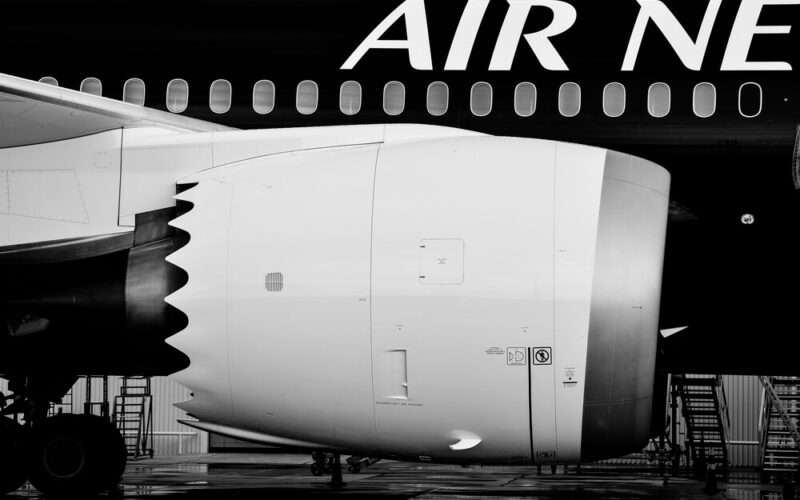Air New Zealand is awaiting its last remaining out-of-service Rolls-Royce engines to return to operation in the upcoming months, the airline has revealed announcing its latest financial results. The flag carrier has been hit by several rounds of Rolls-Royce Trent 1000 problems that continue to affect its operations.
“Another important milestone will be the return of our remaining Rolls-Royce engines back into service, which we are expecting to happen in the coming months,” the airline has revealed in a statement. “This will enable us to bring further reliability back to our flying schedule and to utilise our most efficient aircraft in the optimum way”.
The Air New Zealand’s “most efficient” aircraft are 13 Boeing 787-9 Dreamliners that the carrier has in its fleet of 64 airliners. The airliners, while preferred by the airline for their fuel efficiency, have been plagued by engine problems.
In early 2016, the launch customer of the Boeing 787, All Nippon Airways (ANA), detected unusual corrosion in blades of intermediate-pressure turbine (IPT), resulting in early wear and cracking on Trent 1000 Package C engines. At the time, the company estimated that it would take roughly three years to replace the blades in all the affected engines.
Air New Zealand was among the affected airlines. It had to cancel flights, make scheduling changes and resort to leasing wide-body aircraft as maintenance issues with the Rolls-Royce Trent 1000 engines resulted in grounding of some of its Boeing 787-9 aircraft. However, the problems did not stop here.
In January 2019, early wear of the high-pressure turbine (HPT) blade of Trent 1000 TEN was also detected, prompting for more inspections. Some of the airline’s Dreamliners were already fitted with Trent 1000 TEN engines too. Moreover, “at least seven of Air New Zealand’s Trent 1000 TEN engines are replacements for the earlier model Trent 1000 “Package C” engines”, Australian Aviation estimates.
In August 2018, the airline already accounted $30 million to $40 million hit resulting from schedule changes prompted by the global Rolls-Royce engine issues. This year, it does not reveal the exact numbers, instead vaguely mentioning “a temporary increase in operating costs” in the face of the global Rolls-Royce engine issues.
In August 2019, Rolls-Royce announced it was getting close to fixing problems that affect its Trent 1000 engines. “We have made good progress on resolving the Trent 1000 compressor issue, though regretfully, customer disruption remains,” was written in a statement by the company.
Engines problems have not discouraged Air New Zealand from buying Dreamliners. In May 2019, the airline signed a firm agreement to purchase eight Boeing 787-10s with an option to increase the order up to 20 aircraft, as well as, rights that allow to switch from the larger 787-10 aircraft to smaller 787-9s. The deal is valued at $2.7 billion (at list prices) and the first airliners are expected to arrive in 2022.
But this time, instead of Rolls-Royce, the airline opted for GE Aviation’s GEnx-1B engines to power its new long-haulers.
At the moment, Air New Zealand website (last update three days ago) still warns passengers about possible schedule or aircraft changes due to Rolls-Royce Trent 1000 Package C engine problems on a “number of” their Boeing 787-9s.
The airline explains that earlier than expected maintenance checks on a specific part of the engine compressor are required as advised by Rolls-Royce, in conjunction with European regulator EASA. To solve the issue, it is leasing one Boeing 777-300 aircraft from EVA Air.

